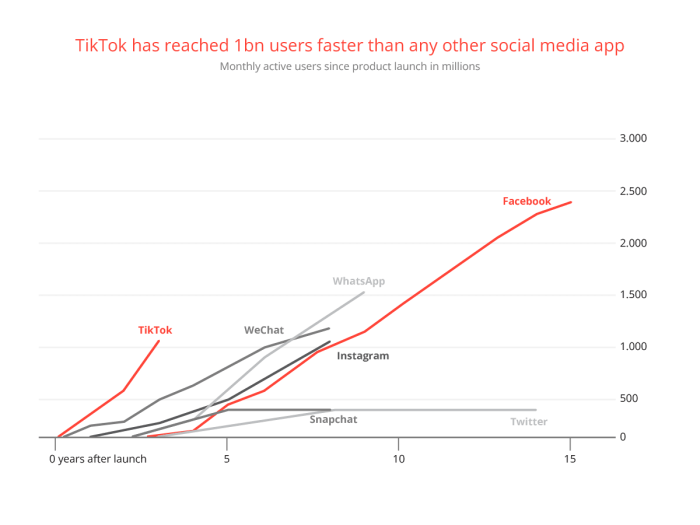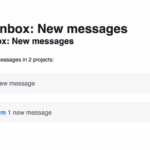Trending industries and audiences for TikTok advertising are rapidly evolving, creating exciting opportunities for brands. This exploration dives deep into the key industries experiencing growth on the platform, understanding their target audiences, and analyzing the most effective advertising strategies to maximize your TikTok impact. We’ll uncover which industries are thriving, who’s engaging with them, and how to craft campaigns that resonate with TikTok’s unique user base.
From identifying emerging trends in content creation to measuring campaign performance, we’ll provide a comprehensive overview of everything you need to know to succeed in TikTok advertising. This analysis will empower you to stay ahead of the curve and capitalize on the platform’s dynamic nature, maximizing your reach and engagement with the right audience.
Identifying Trending Industries on TikTok
TikTok has exploded as a powerful advertising platform, attracting a diverse and engaged audience. Understanding the industries thriving on the platform and their approaches to marketing is crucial for businesses seeking to tap into this dynamic market. This analysis dives into five key industries experiencing significant growth on TikTok, examining their unique appeal and evolving marketing strategies.
Trending Industries on TikTok
Several industries have successfully capitalized on TikTok’s unique features, fostering strong engagement and brand visibility. The platform’s emphasis on short-form video, user-generated content, and interactive features like duets and challenges has created fertile ground for innovative marketing campaigns.
- Beauty and Personal Care: This industry benefits significantly from TikTok’s focus on visual appeal and user-generated content. Tutorials, product demonstrations, and influencer collaborations drive significant engagement. For example, viral makeup trends and skincare routines have generated substantial interest and brand awareness for numerous beauty brands. The platform’s short-form video format allows for quick demonstrations and product reviews, making it highly effective for this industry.
- Food and Beverage: TikTok’s emphasis on food content is undeniable. Users are attracted to visually appealing food creations, recipe demonstrations, and restaurant reviews. The platform’s interactive features, like challenges and trends related to specific cuisines or dishes, further amplify engagement. Examples include the viral spread of unique culinary creations and food challenges, which significantly boost brand recognition.
- Fashion and Apparel: TikTok’s short-form video format perfectly suits the fashion industry. Brands leverage the platform to showcase new collections, style tips, and behind-the-scenes content. User-generated content, including fashion challenges and style recommendations, further strengthens engagement. Trends in fashion, such as specific clothing items or style combinations, are often initiated and disseminated through TikTok.
- Gaming: TikTok has become a hub for gaming communities, featuring gameplay videos, tutorials, and influencer collaborations. The platform’s interactive features enable users to engage with games and content in real-time, promoting interaction and brand awareness. Gaming influencers on TikTok demonstrate gameplay, review new releases, and host challenges that drive engagement and promote new titles.
- Education and Learning: TikTok is increasingly used as a platform for educational content. Educational content creators share engaging lessons, tutorials, and study tips in a visually appealing and accessible manner. The short-form video format is particularly effective for explaining complex topics in a digestible way. Educational videos and study guides are gaining traction on TikTok, catering to a broad audience seeking quick learning resources.
TikTok advertising is booming, with certain industries and demographics seeing massive engagement. Understanding your target audience is key, and that includes considering the best SEO strategies for merging sites, like those discussed in this helpful guide: top seo considerations for merging sites. Ultimately, knowing your audience and how they use TikTok is essential for successful advertising campaigns, regardless of whether your business is merging with another or not.
TikTok Advertising Strategies in Trending Industries
Businesses are adapting their strategies to leverage TikTok’s potential for advertising. Understanding the platform’s strengths is critical to developing successful campaigns. The emphasis on user-generated content, influencer collaborations, and interactive features is key to maximizing engagement.
| Industry | Company A (Example: Beauty Brand) | Company B (Example: Food Restaurant) | Company C (Example: Fashion Brand) |
|---|---|---|---|
| Beauty | Utilizing influencer marketing for product demonstrations, running challenges for user-generated content, and utilizing trending sounds. | Featuring dishes on TikTok with aesthetically pleasing visuals, using interactive filters for food creations, and engaging in collaborative cooking challenges. | Showcasing new collections through visually engaging short videos, highlighting the styling and fit of clothes, and participating in trending fashion challenges. |
| Food | Utilizing short videos to highlight dishes, running contests for users to create food content, and collaborating with influencers for recipe demonstrations. | ||
| Fashion | Leveraging trending styles, utilizing popular TikTok sounds to create trendy content, and featuring influencers in style tutorials. | ||
| Gaming | Promoting games through short, engaging videos, highlighting gameplay and key features, and hosting gaming challenges for user participation. | ||
| Education | Using short videos for concise educational content, creating visually appealing tutorials, and utilizing trending sounds to increase engagement. |
Understanding Target Audiences
TikTok’s explosive growth has created a unique landscape for advertisers. Understanding the target audience is crucial for crafting effective campaigns that resonate with users and drive conversions. This involves delving into their demographics, psychographics, and evolving behaviors, particularly within trending industries. A nuanced understanding of these factors enables tailored strategies for maximum impact.Identifying the specific needs and preferences of different audience segments within trending industries allows for more focused and impactful advertising.
By recognizing the key demographics and psychographics of these users, advertisers can craft campaigns that are highly targeted and resonate with the intended audience, leading to improved conversion rates and brand awareness. Analyzing how these audience segments differ and what motivates them to engage with content is critical for success.
Key Demographic Characteristics of TikTok Users
TikTok users exhibit a diverse range of demographic characteristics. While no single profile perfectly captures the entire user base, a significant portion falls within the 16-24 age range, with a noticeable increase in the 25-34 age group, demonstrating the platform’s appeal across various age brackets. Gender distribution tends to be relatively balanced, with a slightly higher proportion of female users.
Geographic location significantly influences content preferences and trends, making localized advertising strategies essential.
Psychographics of TikTok Users Engaging with Trending Industries
Beyond demographics, understanding the psychographics of TikTok users is equally important. Users within trending industries often demonstrate a strong interest in creativity, self-expression, and trends. They are typically drawn to visually appealing content, quick-paced formats, and engaging storytelling. Motivations for engaging with content in these industries vary, including acquiring new skills, seeking inspiration, or connecting with like-minded individuals.
For example, users in the beauty industry might be motivated by product reviews, tutorials, or the desire to explore new makeup styles. Conversely, users in the gaming industry might be seeking gameplay tips, competitive challenges, or to connect with other players.
TikTok advertising is booming, with a ton of industries and audiences jumping on the bandwagon. From fashion and beauty to gaming and education, the possibilities are endless. But before you dive into your TikTok ad campaigns, remember to keep your browser running smoothly, like clearing your cache in Chrome on Android. Doing so will ensure your ads are reaching the right people and not getting lost in a cluttered browser.
This means you’ll need to frequently check and clean your cache on your phone, so if you need help with clear your cache chrome android , don’t hesitate to visit that helpful resource. Ultimately, knowing your audience and keeping your online tools optimized is key to successful TikTok advertising.
Comparison and Contrast of Audience Segments
Within each trending industry, distinct audience segments can be identified. For example, within the beauty industry, users can be categorized into those interested in affordable products, high-end brands, or specific niche beauty interests like skincare or makeup application. In the gaming industry, audience segments might differ based on the type of game played, the level of competitiveness, or the desire for social interaction.
Understanding these differences allows for more tailored advertising approaches to maximize engagement with specific user needs and preferences.
Evolving Preferences and Behaviors of TikTok Audiences
TikTok users are constantly evolving their preferences and behaviors. Short-form video consumption remains paramount, and users are increasingly drawn to authentic and relatable content. The platform’s algorithms adapt rapidly, requiring advertisers to remain agile and responsive to shifting trends and user interests. The need for user-generated content, influencers, and engaging storytelling remains critical for capturing attention and building brand loyalty.
Understanding these trends is essential for successful advertising campaigns.
TikTok Advertising Campaign Examples
| Industry | Target Audience Segment | Campaign Strategy | Example Tactics |
|---|---|---|---|
| Beauty | Budget-conscious millennials | Highlight affordable, high-quality products | Collaborate with micro-influencers, use trending audio, run contests for product giveaways |
| Gaming | Competitive gamers | Focus on skill development and high-stakes competition | Partner with pro gamers, host tournaments, offer exclusive content |
| Food | Foodie enthusiasts | Showcase unique culinary experiences | Collaborate with food bloggers, highlight local eateries, use visually appealing content |
Evaluating TikTok Advertising Formats

TikTok’s explosive growth has created a fertile ground for businesses to connect with audiences. Understanding the diverse advertising formats available and how they perform is crucial for maximizing ROI. This section delves into the various options, highlighting their strengths and weaknesses for engaging trending industries.Effective utilization of TikTok’s advertising ecosystem requires a nuanced approach. Simply throwing money at ads isn’t enough.
Understanding the strengths and weaknesses of each format, and how they align with specific target audiences, is paramount. By recognizing the specific metrics of each ad type, marketers can make strategic choices for their budget allocation and campaign optimization.
TikTok Advertising Formats
Different advertising formats on TikTok cater to various marketing goals. Choosing the right format is crucial for reaching the desired audience and achieving campaign objectives. Each format has distinct strengths and weaknesses, and these vary based on the trending industry and target demographic.
- In-feed Ads: These ads seamlessly integrate into the user’s feed, appearing similar to organic content. They are highly effective for showcasing products or services within the context of trending topics. In-feed ads allow for engaging visuals and concise messaging, making them a potent tool for driving conversions. For instance, a fitness apparel brand can showcase a new workout outfit in a short video featuring trending workout routines.
The ad will appear naturally among other user-generated content, maximizing its impact. Engagement rates are often higher than other formats due to the user’s active involvement in the platform.
- Branded Effects: These interactive filters and AR effects allow users to engage directly with a brand. They are particularly effective in the beauty and fashion industries. A makeup brand could create a filter that lets users virtually try on new shades, fostering brand interaction and user-generated content. These effects are often viral, significantly expanding brand reach. Tracking the performance of branded effects can be more complex than in-feed ads, involving analysis of user engagement with the effect itself, downloads, and subsequent brand mentions.
- Collaborations: Partnering with influencers or creators can expose a brand to a wider audience. For example, a food delivery service might partner with a popular food blogger to showcase their products or offer exclusive discounts to followers. This approach leverages the creator’s established audience trust and generates authentic engagement. Measuring the effectiveness of collaborations often involves tracking website traffic, sales conversions, and brand mentions through social listening tools.
The impact of a collaboration hinges heavily on the creator’s reputation and the alignment between the brand and the creator’s values.
- Live Streams: Live streams provide real-time engagement and interaction with users. This format is ideal for showcasing products or services in real-time, like a fashion show or a cooking demonstration. Live streams can drive immediate sales and foster community engagement. Tracking the performance of live streams requires monitoring metrics like audience size, interaction rates, and conversion rates. Live streams also benefit from real-time interaction, making it a dynamic format for brands.
Performance Metrics Comparison
The effectiveness of different advertising formats is evaluated using specific metrics. These metrics provide a quantitative understanding of ad performance, aiding in campaign optimization.
| Advertising Format | Strengths | Weaknesses |
|---|---|---|
| In-feed Ads | High visibility, natural integration, cost-effective, good for driving awareness and conversions. | Can be easily missed, less control over placement, potentially high competition for visibility. |
| Branded Effects | High engagement, virality potential, strong brand recall, interactive experience. | Complex tracking, potentially lower conversion rates compared to in-feed, cost can be higher. |
| Collaborations | Authenticity, reach to specific niche audiences, trust and credibility, high potential for organic growth. | Requires careful selection of influencers, limited control over message, dependence on influencer performance. |
| Live Streams | Real-time interaction, immediate engagement, direct sales potential, community building. | Limited replay value, technical glitches can disrupt the experience, requires skilled management to maximize engagement. |
Analyzing Content Strategies for Success

TikTok’s dynamic nature demands creative content strategies for brands to stand out. Understanding what works for trending industries and audiences is key to maximizing engagement and driving conversions. Successful campaigns leverage TikTok’s unique features, engaging with trends, and fostering a community around the brand.Effective TikTok content strategies go beyond simply posting; they involve a deep understanding of the platform’s algorithms, audience preferences, and the specific demands of each industry.
Brands need to tailor their approach, adopting a multi-faceted strategy that combines trend participation, interactive formats, and influencer collaborations to resonate with their target audience.
Content Creation Strategies Employed by Brands, Trending industries and audiences for tiktok advertising
Brands in trending industries on TikTok often use a combination of strategies to maximize engagement. This involves creating content that is not only visually appealing but also resonates with the audience’s interests and values. These strategies focus on trends, challenges, and interactive content.
- Trendjacking: Brands adeptly identify and participate in trending sounds, dances, or challenges. This allows them to reach a large audience quickly and effectively tap into current cultural moments. Examples include brands incorporating trending sounds into their product demos or creating unique dance routines that align with their brand message.
- Challenges and Contests: Engaging challenges and contests encourage user participation, fostering a sense of community and increasing brand visibility. These can be simple, like a product usage challenge, or more complex, like a design contest based on a trending theme. The key is to incentivize participation and encourage sharing.
- Interactive Content Formats: Brands use interactive content formats like polls, quizzes, Q&A sessions, and live streams to engage users directly. These formats foster interaction and allow brands to understand audience preferences and address concerns in real time.
Use of Trends, Challenges, and Interactive Content Formats
The strategic use of trends, challenges, and interactive content is crucial for brand visibility and engagement. These elements are powerful tools to increase brand awareness and create a sense of community.
- Trendjacking: Successful trendjacking involves more than just copying a trend; it’s about adapting it to align with the brand’s message and values. A fitness brand, for example, might create a workout routine video that incorporates a trending dance, showcasing how their products can be used during the exercise.
- Challenges: Brand challenges are a powerful way to drive participation and engagement. They can encourage users to create content featuring the brand’s products or services, increasing visibility and generating organic content.
- Interactive Content: Live Q&As allow brands to directly address customer concerns, build trust, and demonstrate authenticity. Polls and quizzes can gather valuable audience insights to refine marketing strategies.
Role of Influencers and Creators
Influencers and creators play a vital role in promoting products or services on TikTok. Their authenticity and ability to connect with specific target audiences are valuable assets.
- Collaboration with Influencers: Partnering with relevant influencers allows brands to tap into their existing audience and build trust through authentic endorsements. Collaborations can take various forms, from sponsored posts to challenges and live streams.
- Leveraging Creator Content: Brands can identify and engage with creators already producing content related to their industry. This approach allows for organic integration of brand messaging into the existing content stream, boosting credibility and visibility.
Examples of Successful Campaigns
Several brands have demonstrated successful TikTok campaigns. These campaigns highlight the importance of engaging content strategies. For example, a cosmetics brand might create a series of makeup tutorials featuring trending sounds, or a clothing brand might host a virtual fashion show using interactive elements like polls and quizzes.
TikTok advertising is booming, with specific industries and demographics driving engagement. Understanding the current trends in these audiences is crucial, and AI is rapidly changing how we approach digital marketing strategies like targeting specific users. AI and digital marketing strategies are becoming increasingly important for effectively reaching the right people on TikTok. Ultimately, understanding these trends and using the right tools, like AI, is key to maximizing your TikTok ad campaigns for success in the current market.
Summary of Content Strategies
| Content Strategy | Effectiveness | Examples |
|---|---|---|
| Trendjacking | High engagement, increased reach | Using trending sounds, dances, or challenges |
| Challenges and Contests | High user participation, organic content generation | Product usage challenges, design contests |
| Interactive Content | Direct engagement, valuable audience insights | Polls, quizzes, Q&A sessions, live streams |
| Influencer Collaborations | Authentic endorsements, expanded reach | Sponsored posts, challenges, live streams |
Measuring Campaign Performance
TikTok advertising campaigns can be powerful tools for reaching specific audiences in trending industries, but their effectiveness hinges on meticulous monitoring and analysis. Understanding how to measure campaign performance is crucial for identifying areas of improvement and optimizing future strategies. A well-structured approach to campaign evaluation will help maximize return on investment (ROI) and ensure that ad spend is yielding the desired results.Analyzing campaign performance requires a comprehensive understanding of key metrics and how they interrelate.
Interpreting these metrics accurately will illuminate areas where the campaign is succeeding and where adjustments are needed to enhance engagement and conversions. Using the right analytical tools and implementing A/B testing are essential for continuous optimization and campaign success.
Key Metrics for TikTok Campaign Evaluation
Understanding the nuances of TikTok’s advertising ecosystem is paramount to evaluating campaign performance effectively. Tracking a range of metrics, including impressions, reach, engagement, and conversions, provides a comprehensive view of campaign effectiveness. Crucially, these metrics must be interpreted within the context of the specific industry and target audience. For example, a campaign focused on brand awareness in the beauty industry may prioritize impressions and reach, while a campaign aimed at driving sales for a tech product will likely focus more on conversions and click-through rates.
- Impressions: The total number of times an ad was displayed. This provides a measure of ad visibility and potential reach. A high impression count suggests significant visibility, but it doesn’t guarantee engagement. For instance, an ad for a new smartphone might receive a high number of impressions but low click-through rates if the ad’s creative is not compelling.
- Reach: The unique number of users who saw the ad. This metric is essential for understanding the ad’s potential audience. A high reach indicates that the ad was seen by a diverse segment of the target audience. A low reach suggests that the targeting may need refinement.
- Engagement: The number of interactions with the ad, including likes, comments, shares, and saves. High engagement indicates that the ad resonated with the audience and encouraged interaction. Analyzing the types of engagement (e.g., likes versus comments) can offer insights into audience sentiment.
- Click-Through Rate (CTR): The percentage of users who saw the ad and clicked on it. A high CTR suggests that the ad’s creative and targeting are effective in driving desired actions. A low CTR might indicate a need to refine the ad’s copy, visuals, or targeting parameters.
- Conversion Rate: The percentage of users who completed a desired action after clicking on the ad, such as making a purchase or signing up for a newsletter. Conversion rate is a crucial metric for evaluating the campaign’s effectiveness in driving tangible results. A low conversion rate can be indicative of a need to refine the landing page or optimize the call-to-action.
Using Analytics Tools for Performance Monitoring
TikTok offers its own robust analytics dashboard, providing detailed insights into campaign performance. Leveraging these tools allows advertisers to monitor metrics in real-time, enabling swift adjustments to enhance campaign effectiveness. Third-party analytics platforms can also offer more granular data and integrated reporting.
“Real-time performance monitoring is key to optimizing TikTok campaigns. Analyzing data quickly allows for swift adjustments to improve effectiveness.”
Importance of A/B Testing
A/B testing is an indispensable technique for optimizing TikTok ad campaigns. It involves creating two or more versions of an ad (variants) and testing them against each other to determine which performs best. Testing different ad creatives, targeting options, and calls to action can significantly improve campaign outcomes. A/B testing allows for data-driven decision-making and ensures that campaigns are consistently optimized for maximum effectiveness.
| Metric | Description | Interpretation |
|---|---|---|
| Impressions | Total views of the ad | High impressions indicate good visibility, but low engagement might suggest creative improvements. |
| Reach | Unique users who saw the ad | Low reach suggests refining targeting parameters. |
| Engagement | Interactions with the ad (likes, comments, shares) | High engagement indicates ad resonance. |
| CTR | Click-through rate | Low CTR indicates refining ad copy, visuals, or targeting. |
| Conversion Rate | Users completing a desired action | Low conversion rate suggests optimizing landing page or call-to-action. |
Staying Ahead of the Curve: Trending Industries And Audiences For Tiktok Advertising
Staying ahead of the curve in TikTok advertising requires a keen eye on emerging trends and a willingness to adapt strategies. The platform’s rapid evolution demands continuous learning and a proactive approach to innovation. Brands that anticipate shifts in user behavior and content preferences will gain a significant competitive advantage.The future of TikTok advertising is inextricably linked to the evolving trends on the platform.
Understanding the underlying forces driving these trends allows advertisers to create content that resonates with the target audience, fostering engagement and ultimately, driving conversions. This dynamic environment necessitates continuous monitoring and strategic adjustments.
Emerging Trends and Innovations
TikTok is constantly introducing new features and functionalities, and brands need to adapt to stay relevant. The platform’s algorithm is constantly evolving, making it critical to understand how these changes affect content visibility and reach. New trends emerge quickly, and advertisers must identify and leverage these trends to create engaging content. For instance, the rise of short-form video content has made it a primary tool for showcasing products and services effectively.
Future of TikTok Advertising
The platform’s future is likely to be characterized by an even greater emphasis on personalization and interactive content. Brands will need to use data analytics to tailor their strategies to individual users and to leverage interactive elements to enhance engagement. A focus on personalized recommendations and interactive features will be crucial for success.
Adapting Advertising Strategies
Brands need to proactively adapt their strategies to keep pace with the dynamic nature of TikTok. This includes staying updated on new trends and adjusting content to reflect them. For instance, if a new audio trend emerges, brands should consider using it in their videos to gain visibility and relevance. It’s also crucial to experiment with different content formats, from short-form videos to interactive polls and quizzes, to see what works best for the target audience.
Significance of Staying Informed
Staying informed about new features and updates on the platform is essential for maintaining a strong presence. This includes understanding how new algorithms and features influence content discoverability. Brands need to stay aware of new features like live shopping or interactive filters, to leverage these to improve engagement and conversions. Understanding how new features can be integrated into existing strategies is crucial.
Anticipating and Responding to Trends
Anticipating and responding to emerging trends is a critical aspect of maintaining a successful TikTok presence. This requires a combination of active observation of emerging trends, analysis of audience engagement data, and a willingness to experiment with new formats. Brands should analyze the content performed well in trending topics and adapt them to their own products or services, demonstrating how to adapt strategies to keep up with the dynamic nature of TikTok.
For example, if a specific dance challenge becomes popular, a brand selling athletic wear could create a video showcasing the outfit and encouraging users to participate, using the trend to increase visibility and engagement.
Closing Summary
In conclusion, navigating the ever-changing landscape of TikTok advertising requires a multifaceted approach. Understanding the specific trends within key industries, the motivations of target audiences, and the most effective advertising formats is crucial for success. By analyzing content strategies, measuring campaign performance, and staying informed about emerging trends, brands can optimize their TikTok presence and achieve remarkable results.
The platform’s unique characteristics provide immense potential for growth, but a strategic approach is paramount.









